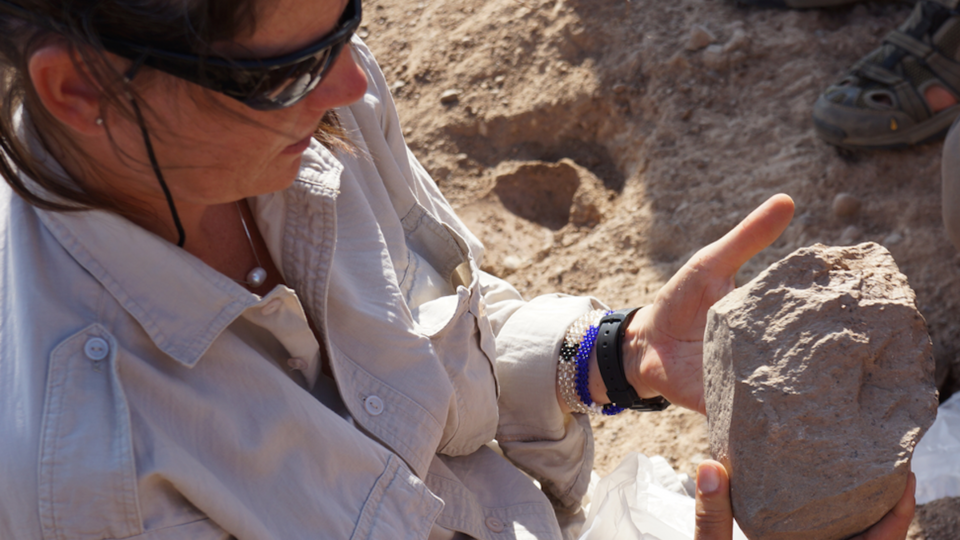Science News
Earlier Tool-Use

Nearly five years ago, we reported here on a surprising discovery of fossilized animal bones displaying evidence of cut marks made by stone tools dating back to 3.39 million years ago. This early “butchering” discovery stirred quite a debate at the time, in part because it pushed back our ancestors’ stone tool use by almost 800,000 years. The dating also meant that fabricated tools predated our genus Homo. (A blow to our speciesist ego?) Some who seriously doubted the cut marks were made from tools claimed there was little evidence: “Where were the tools?” they asked.
Today, a paper in Nature answers that question, announcing the discovery of several tools and tool-making artifacts from a site at Lake Turkana that dates to 3.3 million years ago. Among those thrilled with this finding is the Academy’s Zeray Alemseged, who was one of the co-authors on the cut mark paper in 2010. “Cut-marked bones discovered by our team at Dikika, Ethiopia, dating back to 3.39 million years ago, had indicated that tool use had earlier origins, but the stone tools were missing,” he says. “This exciting discovery provides us with unequivocal evidence and supports our hypothesis.”
Among the findings are “83 cores [for producing sharp flakes], 35 flakes (whole and broken), seven passive elements or potential anvils, seven percussors (whole, broken or potential), three worked cobbles, two split cobbles, and 12 artifacts grouped as indeterminate fragments or pieces lacking diagnostic attributes,” according to the new paper. Somewhat of a resounding “here are the tools” to those who doubted Alemseged’s 2010 paper.
These early stone tools predate Homo—our earliest appearance was only 2.8 million years ago—and, in fact, the tools provide some information about the hominins that used them. Lead author Sonia Harmand, of Stony Brook University, and her colleagues suggest that the makers of these tools had a strong grip and good motor control, providing potential insights into the cognitive capabilities of the early relatives of humans. The tools’ shapes and markings indicate that their users wielded them vigorously to pound items or to produce sharp flakes. The arm and hand motions required for these actions were probably more similar to those used by chimpanzees and other primates to crack nuts, rather than the actions employed by Homo habilis and the Oldowan culture when using their tools later, 2.6 million years ago. “This new Turkana find and the cut-marked bones demonstrate that an Australopithecus-grade species (Australopithecus afarensis or Kenyanthropus platyops) had the capacity to use and make tools, not surprising in light of what we know of chimp behavior,” Alemseged explains.
In a supporting News & Views article, also published today in Nature, Erella Hovers proposes that tool-making “technology” could date back even farther. But Alemseged is happy we’ve finally gotten past the 2.6 million years ago mark. “With the cut marks from Dikika we had the victim, and Harmand’s discovery gives us the smoking gun. Now there is a solid reason to think about early hominin behavior differently and establish that stone tool use and making occurred prior to the Oldowan.”
Image: Sonia Harmond with stone tool, credit MPK-WTAP